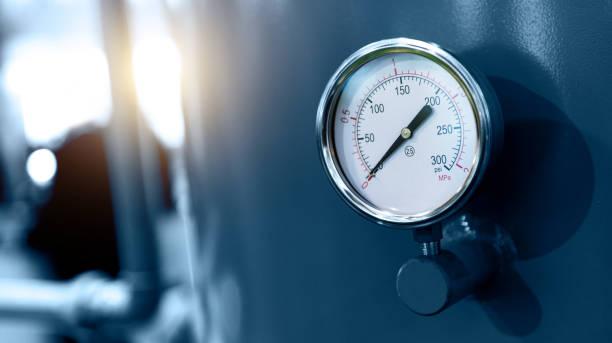What innovations exist in modern Pressure Gauges design?

Pressure Gauges have been essential devices for monitoring and controlling pressure in industrial, scientific, and commercial systems. Traditional designs have relied on simple mechanical components to indicate force per unit area. Over time, demands for greater accuracy, reliability, and integration have pushed manufacturers to develop new forms and functions. Today, modern Pressure Gauges are no longer limited to basic mechanical dials. They include advanced materials, digital technologies, and intelligent features that expand their applications and improve performance.
Advances in Mechanical Construction
Stronger and More Stable Materials
One of the key innovations is the use of improved materials. Early Pressure Gauges often used brass or steel, which could corrode or deform over time. Modern designs use stainless steel, specialized alloys, and composite materials. These choices increase resistance to harsh chemicals, extreme temperatures, and vibration. As a result, gauges remain accurate longer and require less frequent replacement or recalibration.
Enhanced Mechanical Sensing Elements
Mechanical gauges still play an important role in many systems, but their internal parts have become more refined. Bourdon tubes, diaphragms, and capsules are now produced with tighter tolerances and smoother finishes. This reduces friction and wear. The result is a gauge that responds more quickly and consistently to changes in pressure. Precision manufacturing techniques also allow for smaller devices that still deliver reliable readings.
Integration with Digital Technology
Hybrid Analog-Digital Displays
Modern Pressure Gauges increasingly combine classic dial indicators with digital screens. This dual display allows quick visual checks while also providing exact numeric values. Operators benefit from an easy-to-read needle and the precision of a digital readout at the same time. Some designs even include backlit displays for use in low-light environments, expanding their usability in fieldwork or remote locations.
Electronic Signal Output
Digital technology has made it possible for Pressure Gauges to do more than show a number. Many can send electronic signals to control systems, data loggers, or computers. These outputs can be analog or digital, allowing integration with automated processes. The ability to transmit pressure data in real time improves monitoring and supports advanced safety features.
Smart Features and Connectivity
Data Recording and Storage
Traditional gauges provide information only in the moment. Modern Pressure Gauges can store data over time. Internal memory allows them to keep pressure history, which is valuable for maintenance planning and troubleshooting. Reviewing past readings helps engineers understand system performance and detect gradual changes before they lead to failure.
Wireless Communication
Some of the newest gauges include wireless technology. They can connect to networks using Bluetooth, Wi-Fi, or industrial communication protocols. This feature reduces the need for manual checks, especially in hazardous or hard-to-reach areas. Remote monitoring increases safety and efficiency by letting operators review pressure conditions from a distance.
Innovations for Harsh and Specialized Environments
Extreme Temperature Operation
In industries such as energy, aerospace, or chemical processing, gauges must function under very high or very low temperatures. New sealing techniques, advanced lubricants, and temperature-resistant materials now make it possible for Pressure Gauges to perform reliably in extreme conditions.
Corrosion and Chemical Resistance
Modern designs also address the problem of aggressive media. Gauges can now include protective coatings or be built entirely from materials that resist acids, solvents, and other reactive chemicals. This innovation extends service life and reduces the need for external protection or frequent replacements.
Improved Accuracy and Stability
Micro-Engineered Components
Smaller, more precise parts have led to better accuracy. Computer-controlled manufacturing can produce sensing elements with exact shapes and uniform thicknesses. This precision reduces hysteresis, drift, and other errors. As a result, Pressure Gauges today can meet stricter standards and are suitable for applications that once required more complex instruments.
Temperature Compensation
Changes in temperature can distort readings in older gauges. Modern designs include temperature compensation systems that automatically adjust for thermal effects. This ensures stable performance even when the environment fluctuates rapidly, which is common in outdoor installations or industrial settings.
User-Focused Design Improvements
Easier Calibration and Maintenance
Some modern Pressure Gauges are designed with built-in calibration tools. Users can make quick adjustments without removing the gauge or stopping the system. Modular construction also makes maintenance faster and reduces downtime.
Safer Operation
Safety has become a strong focus in new designs. Many gauges include blow-out backs or safety glass to protect users in case of failure. Others have overpressure protection mechanisms that prevent damage from unexpected surges. These features help reduce risks and make gauges more reliable in demanding environments.
The Future Direction of Pressure Gauge Design
Integration with Smart Systems
As industries move toward automation and the Internet of Things, Pressure Gauges will continue to gain connectivity and intelligence. They may soon interact with predictive maintenance systems that analyze data automatically and suggest service schedules. Such integration will reduce manual work and improve system reliability.
Miniaturization and Portability
Another trend is making gauges smaller without losing performance. Portable gauges are already important for field engineers, and future models may be even lighter while offering advanced digital capabilities. Handheld devices may include wireless links, rechargeable power sources, and extended data logging.
Conclusion: A Shift Toward Precision and Intelligence
Modern Pressure Gauges are the result of decades of refinement and technological progress. They have moved beyond simple mechanical indicators to become intelligent instruments that provide accurate data, resist harsh environments, and connect to complex control systems. Innovations in materials, sensing elements, digital integration, and safety features have changed how industries measure and manage pressure.
The future of Pressure Gauges will likely bring even greater connectivity, automation, and durability. By combining mechanical reliability with advanced electronics, today’s designs already offer performance that supports more demanding processes than ever before. This ongoing development ensures that Pressure Gauges remain essential tools in both traditional and emerging applications.
- Art
- Causes
- Crafts
- Dance
- Drinks
- Film
- Fitness
- Food
- Игры
- Gardening
- Health
- Главная
- Literature
- Music
- Networking
- Другое
- Party
- Religion
- Shopping
- Sports
- Theater
- Wellness


